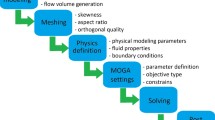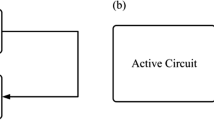Abstract
To meet increasingly stringent emission standards and lower the brake-specific fuel consumption (BSFC) of marine engines, a collaborative optimization study of exhaust gas recirculation (EGR) and a Miller cycle coupled turbocharging system was carried out. In this study, a one-dimensional numerical model of the EGR, Miller cycle, and adjustable two-stage turbocharged engine based on WeiChai 6170 marine diesel engine was established. The particle swarm optimization algorithm was used to achieve multi-input and multi-objective comprehensive optimization, and the effects of EGR-coupled Miller regulation and high-pressure turbine bypass regulation on NOx and BSFC were investigated. The results showed that a medium EGR rate-coupled medium Miller degree was better for the comprehensive optimization of NOx and BSFC. At medium EGR rate and low turbine bypass rates, NOx and BSFC were relatively balanced and acceptable. Finally, an optimal steady-state control strategy under full loads was proposed. With an increase in loads, the optimized turbine bypass rate and Miller degree gradually increased. Compared with the EGR-only system, the optimal system of EGR and Miller cycle coupled turbine bypass reduced NOx by 0.87 g/(kW·h) and BSFC by 17.19 g/(kW·h) at 100% load. Therefore, the EGR and Miller cycle coupled adjustable two-stage turbocharging achieves NOx and BSFC optimization under full loads.
摘要
为了符合日益严格的排放法规和提高柴油机效率,本文开展了船用柴油机EGR米勒循环耦合两级增压系统协同优化研究。首先,以潍柴6170 船用柴油机为研究对象,建立EGR、米勒循环和可调两级增压柴油机的一维数值模型。然后,采用粒子群算法进行油耗和排放综合最优的多输入多目标优化研究,研究EGR耦合米勒调节和EGR耦合高压级涡轮旁通调节对NOx排放和油耗的耦合调节规律。结果表明,中等EGR率耦合中等米勒度对于NOx排放和油耗的协同优化效果更好,在中等EGR率和低涡轮旁通率下,NOx排放和油耗综合较优。最后,基于耦合调节规律,提出了全负荷下最优稳态控制策略。随着负荷的增加,优化的涡轮旁通率和米勒度逐渐增大。与仅使用EGR的系统相比,EGR和米勒循环耦合涡轮旁通的优化系统在100%负荷下NOx排放降低0.87 g/(kW·h),油耗降低17.19 g/(kW·h)。 EGR和米勒循环耦合可调两级涡轮增压可以实现全负荷下NOx和油耗的综合优化。
Similar content being viewed by others
References
KALGHATGI G. Is it really the end of internal combustion engines and petroleum in transport? [J]. Applied Energy, 2018, 225: 965–974. DOI: https://doi.org/10.1016/j.apenergy.2018.05.076.
ČAMPARA L, HASANSPAHIĆ N, VUJIČIĆ S. Overview of MARPOL ANNEX VI regulations for prevention of air pollution from marine diesel engines [C]//SHS Web of Conferences. 2018, 58: 01004. DOI: https://doi.org/10.1051/shsconf/20185801004.
JI Wen-xia, LI Ang, LU Xing-cai, et al. Numerical study on NOx and ISFC co-optimization for a low-speed two-stroke engine via Miller cycle, EGR, intake air humidification, and injection strategy implementation [J]. Applied Thermal Engineering, 2019, 153: 398–408. DOI: https://doi.org/10.1016/j.applthermaleng.2019.03.035.
JANG S H, CHOI J H. Comparison of fuel consumption and emission characteristics of various marine heavy fuel additives [J]. Applied Energy, 2016, 179: 36–44. DOI: https://doi.org/10.1016/j.apenergy.2016.06.122.
PAYKANI A, KHOSHBAKHTI SARAY R, SHERVANITABAR M T, et al. Effect of exhaust gas recirculation and intake pre-heating on performance and emission characteristics of dual fuel engines at part loads [J]. Journal of Central South University, 2012, 19(5): 1346–1352. DOI: https://doi.org/10.1007/s11771-012-1148-5.
SIX D, van HERZELE T, VERVAEKE L, et al. Development and testing of an EGR system for medium speed diesel engines [C]//SAE Technical Paper Series. 400 Commonwealth Drive, Warrendale, PA, United States: SAE International, 2012. DOI: https://doi.org/10.4271/2012-01-0680.
RAPTOTASIOS S I, SAKELLARIDIS N F, PAPAGIANNAKIS R G, et al. Application of a multi-zone combustion model to investigate the NOx reduction potential of two-stroke marine diesel engines using EGR[J]. Applied Energy, 2015, 157: 814–823. DOI: https://doi.org/10.1016/j.apenergy.2014.12.041.
JIANG Xiao-xiao, WEI Hai-qiao, ZHOU Lei, et al. Numerical study on the effects of multiple-injection coupled with EGR on combustion and NOx emissions in a marine diesel engine [J]. Energy Procedia, 2019, 158: 4429–4434. DOI: https://doi.org/10.1016/j.egypro.2019.01.773.
LION S, VLASKOS I, TACCANI R. A review of emissions reduction technologies for low and medium speed marine diesel engines and their potential for waste heat recovery [J]. Energy Conversion and Management, 2020, 207: 112553. DOI: https://doi.org/10.1016/j.enconman.2020.112553.
THANGARAJA J, KANNAN C. Effect of exhaust gas recirculation on advanced diesel combustion and alternate fuels — A review [J]. Applied Energy, 2016, 180: 169–184. DOI: https://doi.org/10.1016/j.apenergy.2016.07.096.
WANG Peng, TANG Xu-yang, SHI Lei, et al. Experimental investigation of the influences of Miller cycle combined with EGR on performance, energy and exergy characteristics of a four-stroke marine regulated two-stage turbocharged diesel engine [J]. Fuel, 2021, 300: 120940. DOI: https://doi.org/10.1016/j.fuel.2021.120940.
SHEN Kai, XU Zi-shun, CHEN Hong, et al. Investigation on the EGR effect to further improve fuel economy and emissions effect of Miller cycle turbocharged engine [J]. Energy, 2021, 215: 119116. DOI: https://doi.org/10.1016/j.energy.2020.119116.
WIK C, NIEMI S. Low emission engine technologies for future Tier 3 legislations—Options and case studies [J]. Journal of Shipping and Trade, 2016, 1: 3. DOI: https://doi.org/10.1186/s41072-016-0009-z.
WANG Peng, HU Zhi-long, SHI Lei, et al. Experimental investigation of the effects of Miller timing on performance, energy and exergy characteristics of two-stage turbocharged marine diesel engine [J]. Fuel, 2021, 292: 120252. DOI: https://doi.org/10.1016/j.fuel.2021.120252.
LIU Hai-feng, ZHANG Hui-xiang, WANG Hu, et al. A numerical study on combustion and emission characteristics of marine engine through miller cycle coupled with EGR and water emulsified fuel [C]//SAE Technical Paper Series. 400 Commonwealth Drive, Warrendale, PA, United States: SAE International, 2016. DOI: https://doi.org/10.4271/2016-01-2187.
ZAMBONI G, CAPOBIANCO M. Experimental study on the effects of HP and LP EGR in an automotive turbocharged diesel engine [J]. Applied Energy, 2012, 94: 117–128. DOI: https://doi.org/10.1016/j.apenergy.2012.01.046.
MILLO F, GIACOMINETTO P F, BERNARDI M G. Analysis of different exhaust gas recirculation architectures for passenger car Diesel engines [J]. Applied Energy, 2012, 98: 79–91. DOI: https://doi.org/10.1016/j.apenergy.2012.02.081.
VERSCHAEREN R, SCHAEPDRYVER W, SERRUYS T, et al. Experimental study of NOx reduction on a medium speed heavy duty diesel engine by the application of EGR (exhaust gas recirculation) and Miller timing [J]. Energy, 2014, 76: 614–621. DOI: https://doi.org/10.1016/j.energy.2014.08.059.
YAN Bo-wen, WANG Hu, ZHENG Zun-qing, et al. The effects of LIVC Miller cycle on the combustion characteristics and thermal efficiency in a stoichiometric operation natural gas engine with EGR [J]. Applied Thermal Engineering, 2017, 122: 439–450. DOI: https://doi.org/10.1016/j.applthermaleng.2.
PIANO A, MILLO F, BOCCARDO G, et al. Assessment of the predictive capabilities of a combustion model for a modern common rail automotive diesel engine [C]//SAE Technical Paper Series. 400 Commonwealth Drive, Warrendale, PA, United States: SAE International, 2016. DOI: https://doi.org/10.4271/2016-01-0547.
JUNG J, SONG S, HUR K B. Numerical study on the effects of intake valve timing on performance of a natural gas-diesel dual-fuel engine and multi-objective Pareto optimization [J]. Applied Thermal Engineering, 2017, 121: 604–616. DOI: https://doi.org/10.1016/j.applthermaleng.2017.03.036.
PARK S, CHO J, PARK J, et al. Numerical study of the performance and NOx emission of a diesel-methanol dual-fuel engine using multi-objective Pareto optimization [J]. Energy, 2017, 124: 272–283. DOI: https://doi.org/10.1016/j.energy.2017.02.029.
WANG Hong-lu, NITU B, SANDHU J, et al. Integrated engine performance and valvetrain dynamics simulation [C]//SAE Technical Paper Series. 400 Commonwealth Drive, Warrendale, PA, United States: SAE International, 2016. DOI: https://doi.org/10.4271/2016-01-0483.
ISO 8178–4: 1996(E). Emission RICEE. Measurement Part 4: test cycles for different engine applications [S]. https://www.iso.org/standard/15271.html.
LI Tie, GAO Yi, WANG Jia-sheng, et al. The Miller cycle effects on improvement of fuel economy in a highly boosted, high compression ratio, direct-injection gasoline engine: EIVC vs. LIVC [J]. Energy Conversion and Management, 2014, 79: 59–65. DOI: https://doi.org/10.1016/j.enconman.2013.12.022.
YANG Shuai, YANG Xiao-lin, LIU Hai-feng, et al. Simulation analysis of early and late miller cycle strategies influence on diesel engine combustion and emissions [C]//SAE Technical Paper Series. 400 Commonwealth Drive, Warrendale, PA, United States: SAE International, 2020. DOI: https://doi.org/10.4271/2020-01-0662.
LANZANOVA T, NORA M D, ZHAO Hua. Investigation of early and late intake valve closure strategies for load control in a spark ignition ethanol engine [J]. SAE International Journal of Engines, 2017, 10(3): 858–872. DOI: https://doi.org/10.4271/2017-01-0643.
BOUKHALFA G, BELKACEM S, CHIKHI A, et al. Genetic algorithm and particle swarm optimization tuned fuzzy PID controller on direct torque control of dual star induction motor [J]. Journal of Central South University, 2019, 26(7): 1886–1896. DOI: https://doi.org/10.1007/s11771-019-4142-3.
LI Yong-gang, GUI Wei-hua, YANG Chun-hua, et al. Improved PSO algorithm and its application [J]. Journal of Central South University of Technology, 2005, 12(1): 222–226. DOI: https://doi.org/10.1007/s11771-005-0403-4
TAN Guan-zheng, BAO Kun, RIMIRU R M. A composite particle swarm algorithm for global optimization of multimodal functions [J]. Journal of Central South University, 2014, 21(5): 1871–1880. DOI: https://doi.org/10.1007/s11771-014-2133-y.
ZHAO Jin-xing, XU Min. Fuel economy optimization of an Atkinson cycle engine using genetic algorithm [J]. Applied Energy, 2013, 105: 335–348. DOI: https://doi.org/10.1016/j.apenergy.2012.12.061.
Author information
Authors and Affiliations
Contributions
SHI Lei provided the funds and edited the draft of manuscript. TANG Xu-yang conducted the investigation and wrote the first draft of the manuscript. WANG Peng analyzed the data and edited the figures of the manuscript. ZHANG Zhong-yuan and ZHANG Feng-li built engine bench and provided experimental data. DENG Kang-yao edited the draft of manuscript. All authors replied to reviewers’ comments and revised the final version.
Corresponding author
Additional information
Conflict of interest
TANG Xu-yang, WANG Peng, ZHANG Zhong-yuan, ZHANG Feng-li, SHI Lei, and DENG Kang-yao declare that they have no conflict of interest.
Foundation item: Project(K16011) supported by the Marine Low-speed Engine Project-Phase I, China
Rights and permissions
About this article
Cite this article
Tang, Xy., Wang, P., Zhang, Zy. et al. Collaborative optimization of exhaust gas recirculation and Miller cycle of two-stage turbocharged marine diesel engines based on particle swarm optimization. J. Cent. South Univ. 29, 2142–2156 (2022). https://doi.org/10.1007/s11771-022-5082-x
Received:
Accepted:
Published:
Issue Date:
DOI: https://doi.org/10.1007/s11771-022-5082-x
Key words
- exhaust gas recirculation (EGR)
- Miller cycle
- NOx emissions
- adjustable two-stage turbocharging
- particle swarm optimization




